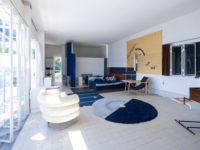An Architectural Gem in Germany is Reborn

Architectural Gem in Germany
Aerial view of campus, circa 1930.
Image courtesy Brenne Gesellschaft von Architekten

Architectural Gem in Germany
Winter garden, post-restoration.
Image courtesy Brenne Gesellschaft von Architekten

Architectural Gem in Germany
School building, post-restoration.
Image courtesy Brenne Gesellschaft von Architekten

Architectural Gem in Germany
Stairway of school building, post-restoration.
Image courtesy Brenne Gesellschaft von Architekten

Architectural Gem in Germany
Side entrance to school building, post-restoration.
Image courtesy Brenne Gesellschaft von Architekten

Architectural Gem in Germany
Front of gymnasium, post-restoration.
Image courtesy Brenne Gesellschaft von Architekten

Architectural Gem in Germany
Front of gymnasium, post-restoration.
Image courtesy Brenne Gesellschaft von Architekten

Architectural Gem in Germany
Dining room, post-restoration.
Image courtesy Brenne Gesellschaft von Architekten

Architectural Gem in Germany
Dormitories, post-restoration.
Image courtesy Brenne Gesellschaft von Architekten

Architectural Gem in Germany
Dormitories, post-restoration.
Image courtesy Brenne Gesellschaft von Architekten




Post a comment to this article
Report Abusive Comment